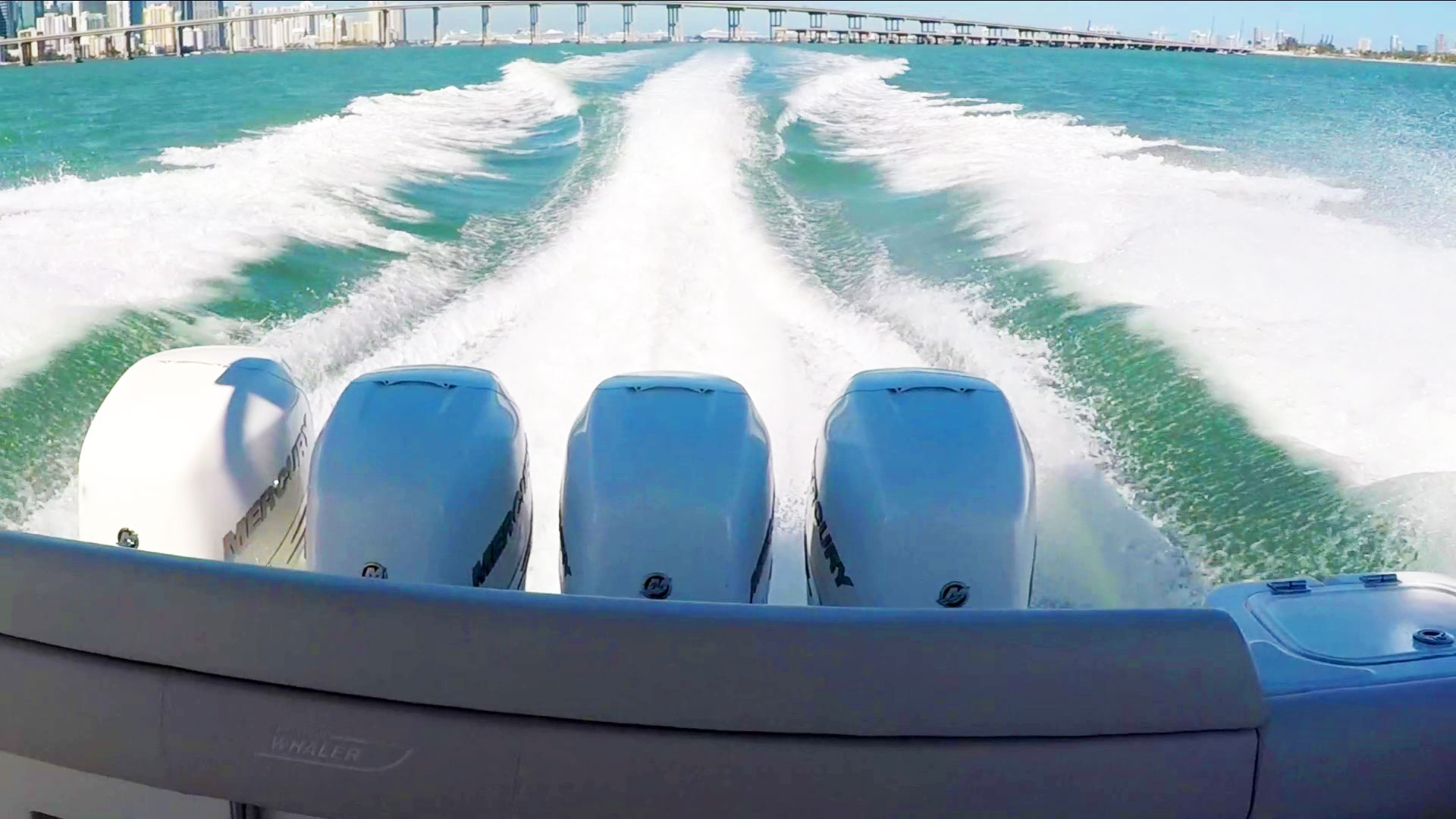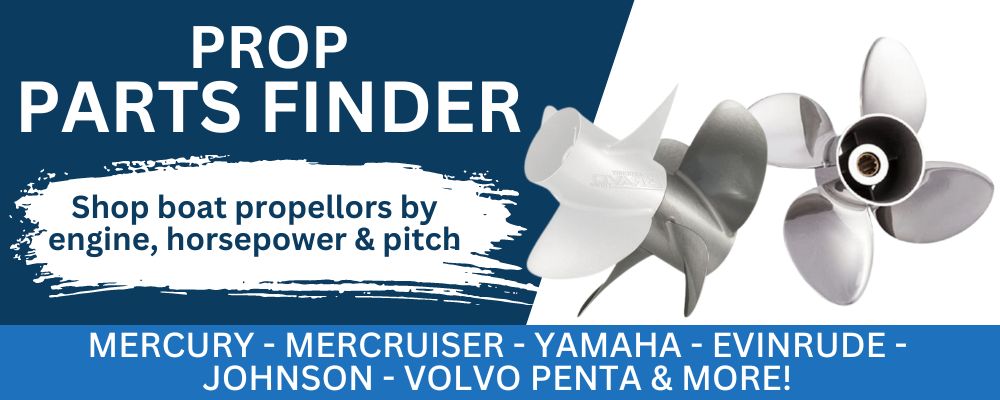
Compare the performance, reliability, maintenance, convenience and efficiency when choosing between sterndrive IO and inboard engines for power boats.
Many express cruiser style power boats offer both sterndrive inboard outboard (IO) and inboard (direct drive or V-drive) engine propulsion system options. Choosing between these engine drive types should be given careful thought for a new or used boat.
Both sterndrive and inboard boat engine types have advantages and disadvantages when it comes to evaluating the overall engine performance, maintenance, reliability, convenience and efficiency in power boat.
Evaluating Sterndrive Inboard Outboards
A stern drive IO, also known as an inboard outboard, has an outboard lower unit connected through the transom of a boat to an inboard gas/petrol or diesel engine.
Widely available on boats under 30 feet (or 9 meters), sterndrive inboard outboards have a lot of advantages when compared to inboard boat motors.
- Performance: An inboard outboard motor is known for more speed and boat trim ability while cruising. The outdrive positioning in the far back of the boat (as opposed to further forward like inboards) helps improve the performance.
- Maintenance: One of the biggest disadvantages of an IO drive is the higher maintenance requirements. While not as big of an issue in freshwater, a sterndrive IO exposed to salt or brackish water is prone to corrosion. To minimize the damage, zinc anodes should be replaced often and antifouling outdrive boat paint should be used annually.
- Reliability: Due to the potential corrosion issues, a sterndrive IO may have a shorter lifespan than an inboard boat motor. A sterndrive replacement is a likely repair with an older boat.
- Convenience: The tilt mechanisms on an IO outdrive enables a boat to go into shallower water than an inboard engine boat. Maneuverability is also easier for a boat with inboard outboard drives.
- Efficiency: Known to be an efficient propulsion design, inboard outboard motors are faster and have better fuel economy than inboard engines.
The two leading manufacturers of sterndrives are Volvo and MerCruiser. Both offer options for counter-rotating propellers that improve propulsion efficiency, speed, acceleration and handling even more. MerCruiser’s Bravo 3 outdrives and Volvo’s DPR DuoProp sterndrives are popular choices. Boat resale values are generally well-maintained for boats with upgraded outdrive models.
Comparing Inboard Boat Engines to Inboard Outboards
Inboards use direct drive or V-drive transmissions to power engines and are prevalent in larger power boats over 30 feet (or 9 meters). With only the drive shaft and propellers submerged, the entire inboard boat motor sits deep inside the hull of a boat.
- Performance: The weight of inboards centered deep in the hull of a boat improves stability because they lower the boat’s center of gravity. Inboard boat motors give a larger boat a smooth and stable ride.
- Maintenance: Inboard engines require much less maintenance than outdrives, especially in salty or brackish water. Boat zinc anodes are still required on drive shafts to reduce corrosion on shafts and propellers. Engine access on smaller boats with inboards can also be a tight fit.
- Reliability: Because inboard motors are more resistant to corrosion they tend to last longer than sterndrive inboard outboards.
- Convenience: Propellers are tucked away under the boat further than a sterndrive, but without a tilt-up mechanism an inboard engine boat has a larger draft. This is one of the biggest disadvantages of an inboard boat motor as compared to an IO motor.
- Efficiency: Due to the angle of the propeller shafts, inboard engines have lower fuel efficiency and less overall performance with the same size motor as inboard outboards.
Selecting a Drive Type for Boat Engine Propulsion
A boat’s size and the type of water a boat will be used in (freshwater vs. saltwater) are two of the biggest determining factors when selecting drive type. When comparing sterndrive IO motors vs. V-drive inboard motors, evaluate the pros and cons for both performance and maintenance requirements. Each engine propulsion system option for a power boat has trade-offs.
The final choice on engine drive type should be based on an individual boater’s preferences and how the boat will be used.
SAVE 10% with our code MYBOATLIFE
Find OEM Marine Engine Parts by Manufacturer
powered by Wholesale Marine
SAVE 10% with our code MYBOATLIFE
Find Propellors by Engine Type, Prop Pitch & More
powered by Wholesale Marine
More on Use of Zincs for Boats & Outdrives
Captain Brian replaces zinc anodes on our Sea Ray to protect the boat from corrosion issues and explains how saltwater can react with the metals on your boat and why replacing your zinc anodes every year or two is so important. He also takes a look at a Mercruiser outdrive with Bravo III props and points out issues that can happen with them if there are not enough zinc anodes on to protect it.
Like Outboards Engines? Watch this video!
Sources for article: Sorensen's Guide to Powerboats, Eric W. Sorensen
SAVE 10% with our code MYBOATLIFE
Find OEM Marine Engine Parts by Manufacturer
powered by Wholesale Marine
SAVE 10% with our code MYBOATLIFE
Find Propellors by Engine Type, Prop Pitch & More
powered by Wholesale Marine





